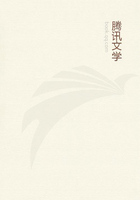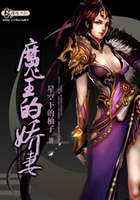treatment, and during the three years that have since elapsed he has been an active business man, although I have not seen him myself during that period, as he took a great dislike to me because I was forced to take strong measures to keep him under treatment, so persistent were his suspicions."Athetosis was first described by Hammond in 1871, who gave it the name because it was mainly characterized by an inability to retain the fingers and toes in any position in which they might be planed, as well as by their continuous motion. According to Drewry "athetosis is a cerebral affection, presenting a combination of symptoms characterized chiefly by a more or less constant mobility of the extremities and an inability to retain them in any fixed position. These morbid, grotesque, involuntary movements are slow and wavy, somewhat regular and rigid, are not jerky, spasmodic, nor tremulous. The movements of the digits are quite different from those attending any other disease, impossible to imitate even by the most skilful malingerer, and, if once seen, are not likely to be forgotten. In an athetoid hand, says Starr, the interossei and lumbricales, which flex the metacarpo-phalangeal and extend the phalangeal joints, are affected; rarely are the long extensors and the long flexors affected. Therefore the hand is usually in the so-called interosseal position, with flexion of the proximal and extension of the middle and distal phalanges. The athetoid movements of the toes correspond to those of the fingers in point of action. In a great majority of cases the disease is confined to one side (hemiathetosis), and is a sequel of hemiplegia. The differential diagnosis of athetosis is generally easily made. The only nervous affections with which it could possibly be confounded are chorea and paralysis agitans. Attention to the twitching, spasmodic, fibrillary movements, having a quick beginning and a quick ending, which is characteristic in Sydenham's chorea, would at once exclude that disease. These jerky movements peculiar to St.
Vitus's dance may be easily detected in a few or many muscles, if moderate care and patience be exercised on the part of the examiner. This form of chorea is almost always a disease of childhood. So-called post-hemiplegic chorea is, in the opinion of both Hammond and Gray, simply athetosis. The silly, dancing, posturing, wiry movements, and the facial distortion observed in Huntington's chorea would hardly be mistaken by a careful observer for athetosis. The two diseases, however, are somewhat alike. Paralysis agitans (shaking palsy), with its coarse tremor, peculiar facies, immobility, shuffling gait, the 'bread-crumbling' attitude of the fingers, and deliberate speech, would be readily eliminated even by a novice. It is, too, a disease of advanced life, usually. Charcot, Gray, Ringer, Bernhardt, Shaw, Eulenberg, Grassel; Kinnicutt, Sinkler, and others have written on this affection."The following is the report of a case by Drewry, of double (or, more strictly speaking, quadruple) athetosis, associated with epilepsy and insanity: "The patient was a negro woman, twenty-six years old when she was admitted into this, the Central State (Va.) Hospital, in April, 1886. She had had epilepsy of the grand mal type for a number of years, was the mother of one child, and earned her living as a domestic. A careful physical examination revealed nothing of importance as an etiologic factor. Following in the footsteps of many of those unfortunates afflicted with epilepsy, she degenerated into a state of almost absolute imbecility.
"Some degree of mental deficiency seems usually to accompany athetosis, even when uncomplicated by any other degenerating neurosis. Athetoid symptoms of an aggravated character, involving both upper and both lower extremities, had developed previous to her admission into this hospital, but it was impossible to find out when and how they began. She had never had, to the knowledge of her friends, an attack of 'apoplexy,' nor of paralysis. The head was symmetric, and without scars thereon. The pedal extremities involuntarily assumed various distorted positions and were constantly in motion. The toes were usually in a state of tonic spasm,--contracted, and drawn downward or extended, pointing upward, and slightly separated. Irregular alternate extension and flexion of the toes were marked. The feet were moved upon the ankles in a stiff and awkward manner. During these 'complex involuntary movements,' the muscles of the calf became hard and rigid. The act of walking was accomplished with considerable difficulty, on account of contractures, and because the feet were not exactly under the control of the will. The unnatural movements of the hands corresponded to those of the lower extremities, though they were more constant and active. The fingers, including the thumbs, were usually widely separated and extended, though they were sometimes slightly flexed. The hands were continually in slow, methodic, quasi-rhythmic motion, never remaining long in the same attitude. In grasping an object the palm of the hand was used, it being difficult to approximate the digits. The wrist-joints were also implicated, there being alternate flexion and extension. In fact these odd contortions affected the entire limb from the shoulder to the digital extremities. When standing or walking the arms were held out horizontally, as if to maintain the equilibrium of the body. The patient's general physical health was fairly good. She frequently complained of headache, and when she was exceedingly irritable and violent all the athetoid movements would be intensified.
Speech was jerky and disordered, which gave it a distinctive character. The special senses seemed to be unimpaired, and the pupils were normal, except when an epileptic attack came on.















